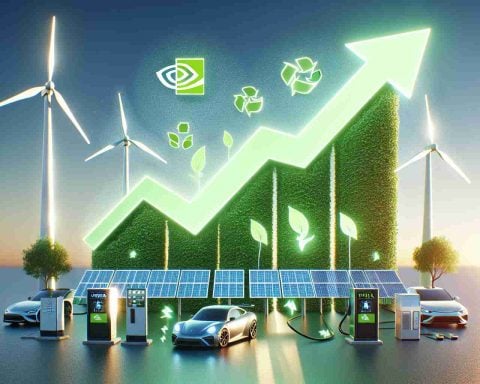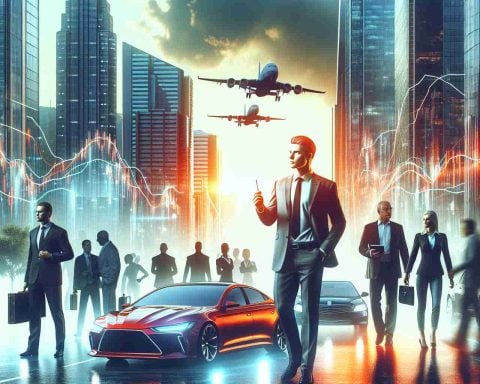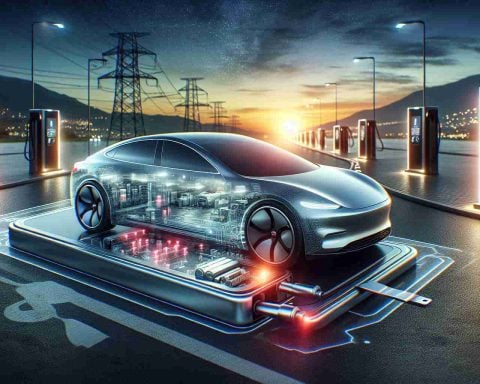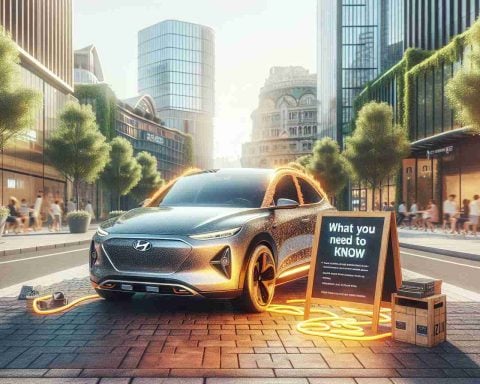- South Korea’s leading battery manufacturers suffered 800 billion won losses in Q4 2024 due to declining electric vehicle sales and battery metal prices.
- Factory utilization rates have dropped significantly, with LG Energy at 60% and SK On at an all-time low of 46%.
- Policy changes in the U.S. have introduced uncertainty, leading to delays in joint ventures like the SK On and Ford factory.
- South Korea’s market share in the battery sector fell from 31.7% in 2021 to just 20.1% in 2024, overshadowed by China’s 53.6% market dominance.
- To counteract the crisis, South Korean companies are implementing salary freezes, layoffs, and pursuing product innovation.
- Experts emphasize that the future of the electric vehicle industry relies on technological advancement and adaptability.
The once-thriving world of electric vehicles is now sending shockwaves through South Korea’s top battery manufacturers. LG Energy Solution, Samsung SDI, and SK On revealed staggering losses of 800 billion won (approximately $40 million) in Q4 of 2024, showcasing the deepening crisis gripping the sector.
The primary culprits behind this financial turmoil? A dramatic slump in electric vehicle sales across Europe, plummeting battery metal prices, and a global slowdown in EV demand. As a result, production rates have taken a nosedive—LG Energy’s factory utilization fell to a mere 60%, while SK On’s plunged to an alarming 46%, the lowest in its history.
Further complicating matters, policy reversals in the U.S. have left manufacturers wary. With Trump’s administration planning to roll back electric vehicle purchasing mandates and subsidies, caution has become the name of the game among car makers. This uncertainty has forced companies like SK On and Ford to delay their joint factory launch from 2024 to 2025.
On a global scale, South Korea’s market share has shrunk significantly, plummeting from 31.7% in 2021 to just 20.1% in 2024, while Chinese manufacturers rise to dominate with over 53.6% of the market. The reliance on traditional battery technologies and fragile supply chains has left these giants vulnerable.
In an attempt to turn the tide, these companies are taking drastic actions. Frozen executive salaries, voluntary layoffs, and shifts in management are just the beginning. There’s a push towards diverse product innovation with new battery technologies aimed at reclaiming their standing.
As 2025 approaches, analysts warn that without a shift towards advanced technologies, South Korea’s battery industry might face an even steeper decline. The message is clear: the electric revolution depends on innovation and resilience.
The Evolving Landscape of South Korea’s Battery Industry: Challenges and Innovations Ahead
Overview
The electric vehicle (EV) sector is at a crucial juncture as South Korea’s leading battery manufacturers—LG Energy Solution, Samsung SDI, and SK On—report staggering losses of 800 billion won (approximately $40 million) in Q4 of 2024. The industry is grappling with significant challenges, including declining EV sales in Europe, decreasing battery metal prices, and a general slowdown in global demand.
Industry Challenges
1. Sales Decline: The significant drop in electric vehicle sales in Europe has placed immense pressure on battery manufacturers.
2. Price Drops: The plummeting prices of essential battery metals have further compounded the financial strain.
3. Production Utilization: Production rates are suffering, with LG Energy’s factory utilization falling to 60% and SK On’s dropping to a historic low of 46%.
4. Policy Instability: Changes in U.S. policy, particularly from the previous administration, have fostered uncertainty, prompting many companies to postpone key projects.
Key Innovations and Future Directions
Despite these setbacks, South Korean battery firms are not standing still. Here’s a look at their innovative strategies and potential future developments:
– Investment in R&D: A renewed focus on research and development for advanced battery technologies, such as solid-state batteries and improved lithium-ion technologies.
– Diversifying Supply Chains: Efforts to secure a reliable supply of critical materials to reduce reliance on unstable sources.
– Sustainability Initiatives: Emphasizing environmentally friendly practices in production to meet evolving consumer expectations.
Important Questions
1. What are the long-term implications of declining sales on South Korea’s battery manufacturers?
The long-term implications may include a potential loss of market share, further reductions in manufacturing capacity, and an urgent need for innovation to stay competitive against dominant Chinese firms.
2. How are these companies adapting to the changing EV landscape?
Companies like LG Energy Solution and SK On are adapting by investing in new technologies, restructuring management, and actively diversifying their product lines to meet market needs and consumer preferences for sustainability.
3. What role does government policy play in the future of EV manufacturing in South Korea?
Government policy can significantly influence the EV market and battery manufacturing landscape. Supportive policies, such as subsidies and regulatory incentives, can boost consumer demand and encourage manufacturers to invest in advanced technologies.
Conclusion
The future of South Korea’s battery industry hinges on its ability to innovate and adapt. As companies strive to overcome current challenges and capitalize on emerging technologies, the path forward will involve a blend of resilience and strategic shifts toward sustainable practices.
For further insights, visit LG Electronics, Samsung SDI, and SK On for updates on their advancements and market strategies.

















